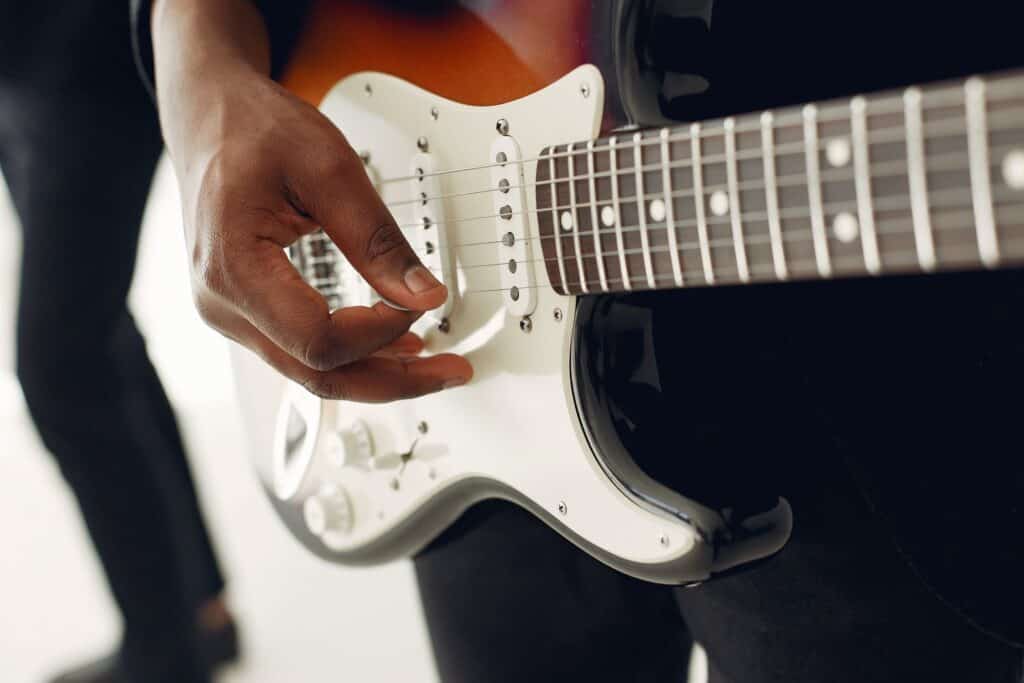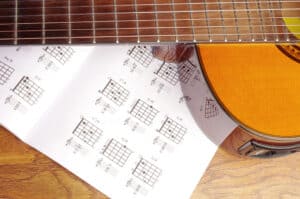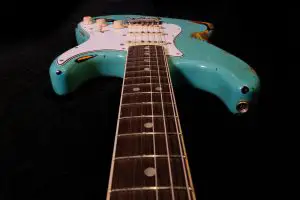
If you’ve ever been to a musical concert, you’ve probably spent a few minutes staring at the “guy on the strings.” Hearing those beautiful sharp notes makes you wish that you could play the electric guitar too. Then you ask yourself the question; how long would it take me to learn the electric guitar?
Different factors determine how long it’ll take to learn the electric guitar. Consistency and practice are the key factors here. But the general estimate is that learning the basics takes 200 hours. But becoming an advanced player could mean 10,000 hours of practicing.
Here’s a little catch, rather than worrying about how long it’ll take you to learn the electric guitar, how about starting learning first?
This article will break down the different stages of learning the electric guitar and how long each usually takes to master.
The Stages of Learning

People learn at different paces, and everyone’s learning abilities vary.
All of us remember that one person from our school days who was just brilliant. They didn’t spend a lot of time studying, but they still had the best grades in the whole class.
Some people are just born talented. Some are talented in Math and Science; some have a talent for playing instruments. But not being born with talent doesn’t mean that you can’t acquire the skills by practice and learning.
Think about it like this; friend A spent at least an hour on guitar practice daily, while friend B spent about 30 minutes daily. While you’d think that friend A should learn faster, there’s also the part where friend B is naturally a fast learner.
Hence, while friend A might grow due to the consistent amount of practice, friend B might grow faster due to both consistency and the natural edge – he’s a fast learner.
How Long Do I Have to Practice?
While there’s no strict timeframe for learning how to play the electric guitar, it’s possible to figure out a general estimate. You’ll find that learning never ends from learning the basics and advancing into a pro. But there’s a rough idea of how long it should take for each learning stage.
Rather than thinking about how many months or years it’ll take you to learn how to play the electric guitar, think about how good you’ll become if you spend 1000 hours practicing. The best way to calculate how long you’ve spent learning to play the electric guitar is to calculate the total hours spent practicing.
10,000 Hour Rule
You could try the infamous “10,000 Hour Rule” by Malcolm Gladwell. If you hope to become a master in anything, e.g., playing the electric guitar, you should focus on hitting 10,000 hours of practice time.
If you follow the “10,000-hour rule”, you’ll have to spend roughly 27 years and 4 months of consistent 1-hour practice. Now that looks crazy. No matter how committed you are, there’ll come days when you don’t feel like practicing. Legitimate distractions could also keep you from practicing 1 hour daily.
So what do you do? Remember that learning never really ends; you keep advancing from one learning stage to another.
Beginner’s Stage of Learning The Electric Guitar
Learning the basics of the guitar is pretty simple. You have to know the parts of the guitar and memorize the names of the strings. Then you’ll advance to basic major and minor chords such as the C Major, D Major, E Major, G Major, A Major, and E Minor.
The beginner’s stage starts with knowing the parts of the guitar and ends with being able to play simple chord progressions and beginner’s songs. You’ll spend approximately 6 months as a beginner if you play for an hour daily. The timeframe can be less if you’re a fast learner and spend more hours practicing. In total, you may spend about 200 hours in practice.
Intermediate Stage of Learning the Electric Guitar
Things get a little trickier here. You advance from basic chords and songs into more complex chords such as F Major, B Major, playing Barre chords, and learning new strumming patterns. You’ll be introduced to plucking here and start learning or easily understanding the guitar tablature.
At this stage, your finger dexterity in playing multiple chords would grow. You’ll start playing chords across the guitar fretboard rather than being stuck at the beginner’s frets 1 to 3.
The intermediate stage would have you spending about 400 hours or more. Why? You’ll need to maintain your basic practice while learning new things. You should have gotten to the intermediate stage in a year or more.
Advanced Stage of Learning the Electric Guitar
You’re on your way to being a pro when you’ve crossed the advanced stage. You can easily move across the fretboard and master the guitar tablature at this stage. Here, you’ll spend more time refining your skills and music theory.
It’ll be easy to take on complex songs at the advanced stage and play any new song by just listening. But then, this is where you’ll spend the rest of your life. Why? Learning never ends.
Conclusion
Learning never ends, but with at least 1000 hours of practice, you should have gotten close to becoming a pro player of the electric guitar. However, the goal isn’t to score 1000 hours of practice but to become so good at playing that you’d be able to play “asleep.”
Sometimes you may have to repeat what you’ve learned until it becomes a part of you. You might remain at the beginner’s stage for a year if you’re still battling the basics. If you’re a fast and committed learner, you might be able to reach the advanced stage in at least a year.
It all boils down to learning rather than ticking off how many hours you’ve spent learning to play the electric guitar.









